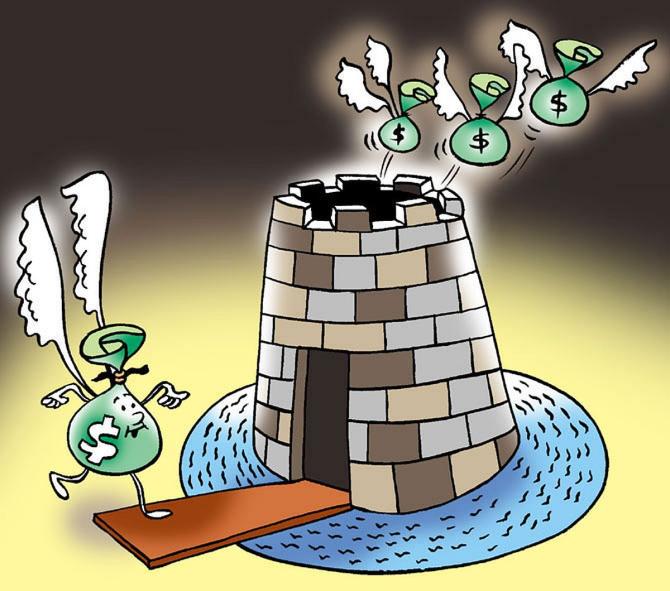‘Investors should allocate more towards large-caps and defensives in the current risk-off scenario’

‘For the next two years, we expect the bulk of earnings growth contribution from sectors like financials and energy, where the outlook remains positive, while the sectors which are linked to domestic consumption and are currently witnessing strains on margins have low salience for Nifty earnings.’
The sell-off by foreign portfolio investors (FPIs) may continue, but foreign ownership declining to a multi-year low will act as a buffer, says Kunal Vora, head of India equity research, BNP Paribas.
In an interview with Samie Modak/Business Standard, Vora says moderation in growth and rising input cost pressure can lead to earnings downgrades.
How is the earnings season panning out?
Nifty earnings estimates have not seen any meaningful cuts despite the negative news flow over the past few months.
In recent weeks, the downgrades seen in the IT and domestic consumption-led sectors have been largely offset by estimate upgrades for the energy and materials sector, supporting the Nifty earnings estimates.
Moderation in growth and the rising input cost pressure were the key themes going into this earnings season, borne out by the initial results.
Earlier, the Street was expecting margin normalisation in FY23, which now seems unlikely given the recent surge in commodity costs and supply-side disruptions, following the Russia-Ukraine conflict — the full impact of which will only be visible in the June 2022 quarter.
Considering this, some downgrades are expected, but the extent of the revisions will depend on how the situation evolves around input costs, companies’ ability to raise prices without adverse volume impact, and the restoration of supply chains.
For the next two years, we expect the bulk of earnings growth contribution from sectors like financials and energy, where the outlook remains positive, while the sectors which are linked to domestic consumption and are currently witnessing strains on margins have low salience for Nifty earnings.
Which are the sectors you are the most bullish and bearish on?
We believe investors should allocate more towards large-caps and defensives in the current risk-off scenario.
Financials seem well positioned on the likely pick up in credit growth, better asset quality, and valuation comfort.
The telecom sector — which has gone through a period of high competition, low tariffs, and high spectrum costs — looks attractive with the expectations of further tariff hikes.
We are also bullish on select hospitals and diagnostics firms for their long-term growth potential and structural stories.
The domestic consumption space seems to be facing multiple near-term headwinds and we believe the larger companies are better positioned to navigate the challenges.
The rural income growth has lagged inflation and is hurting the mass-consumption categories like FMCG.
Companies are unable to pass on the rising cost to consumers without hurting sales volume.
So far, we have preferred businesses catering to affluent India instead of mass consumption, given the higher savings in a work-from-home setting, salary hikes amid rising attrition and low interest rates.
However, there is a possibility that the situation may reverse as affluent India may get hurt by rising interest rates, return of discretionary expenses, and higher commute costs, while rural India may benefit from higher agricultural commodity prices.
The Street has been overweight on banks and financials, but that trade hasn’t materialised. Why?
Over the past year, we have seen the bulk of the foreign selling being concentrated in the financial sector.
Also, FPIs’ allocation to the sector has traditionally been the highest, which has remained an overhang on the sector’s performance.
The improvement in credit growth led by a revival in the capex cycle, a reversal of excess provisions, and easing or reversal of FPI outflows may result in a re-rating of the sector.
What are the key reasons for the FPI sell-off?
The rising inflation in key commodities and elevated bond yields globally remain the key challenges for foreign investors, leading to capital outflows across emerging markets.
Foreign investors are looking for safe havens in the rising interest rate scenario.
Especially for India, crude oil prices above $100 a barrel can stoke inflationary pressures, worsen the current account deficit, and undermine the Union Budget assumptions, impacting the macroeconomic stability and near-term outlook for India.
While in FY22, India saw a net outflow of $18 billion but over the last three years, India has seen a net inflow of $38 billion, which is higher than those of its Asian peers.
With sustained domestic and foreign flows, India’s valuation premium to Asian peers has widened and this can be another reason for India witnessing FPI outflows, besides other factors.
Do you expect FPI outflows from the Indian markets to continue?
In a risk-off scenario, where there are growing concerns about the economic impact of the Russia-Ukraine conflict, along with the existing woes of rising inflation and tightening monetary policy, FPI outflows may continue until the global situation normalises.
Having said that, FPI holdings in India are at multi-year lows currently, and thus is a strong buffer.
FPI holdings increased from 15 per cent during the global financial crisis to 22 per cent before Covid, before inching down to about 18 per cent currently.
Structurally, India remains one of the fastest-growing major economies with political stability and continued policy support from the government, which underlines the attractiveness of the Indian market for FPIs in the mid-to-long term.
Do you expect strong domestic flows into the Indian markets to continue?
Since the onset of the Covid pandemic, retail participation in the Indian markets has seen a meaningful jump, as investors adjusted to a very low deposit-rate situation (both nominal and real) in India.
Equities have offered much better returns than debt products over the past two years and investors continue to look for higher returns to protect their purchasing power amid high inflation.
We expect steady inflows into systematic investment plans (SIPs) to continue, though we need to watch out for some reversal as interest rates increase and equity returns moderate.
Feature Presentation: Aslam Hunani/Rediff.com
Source: Read Full Article

